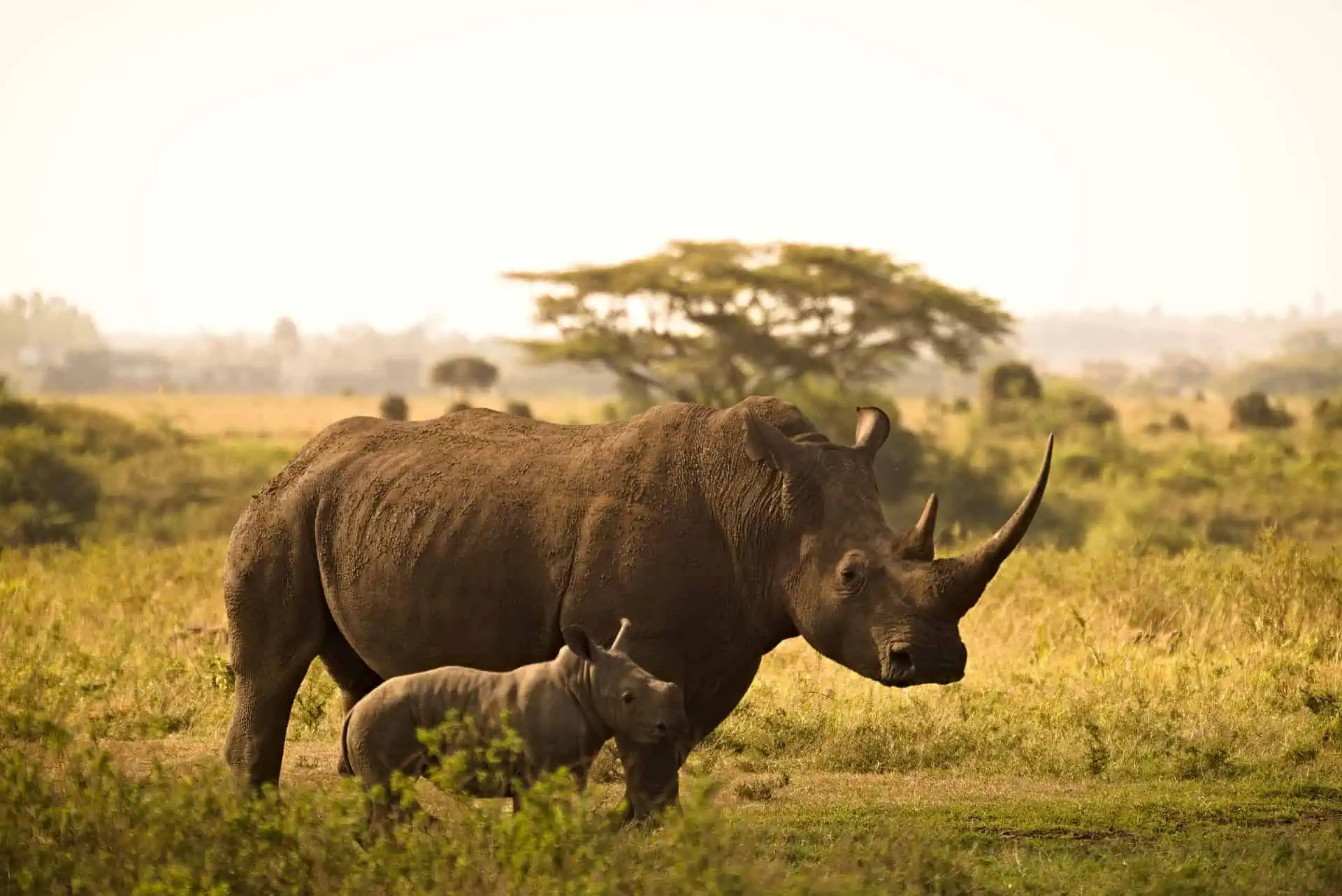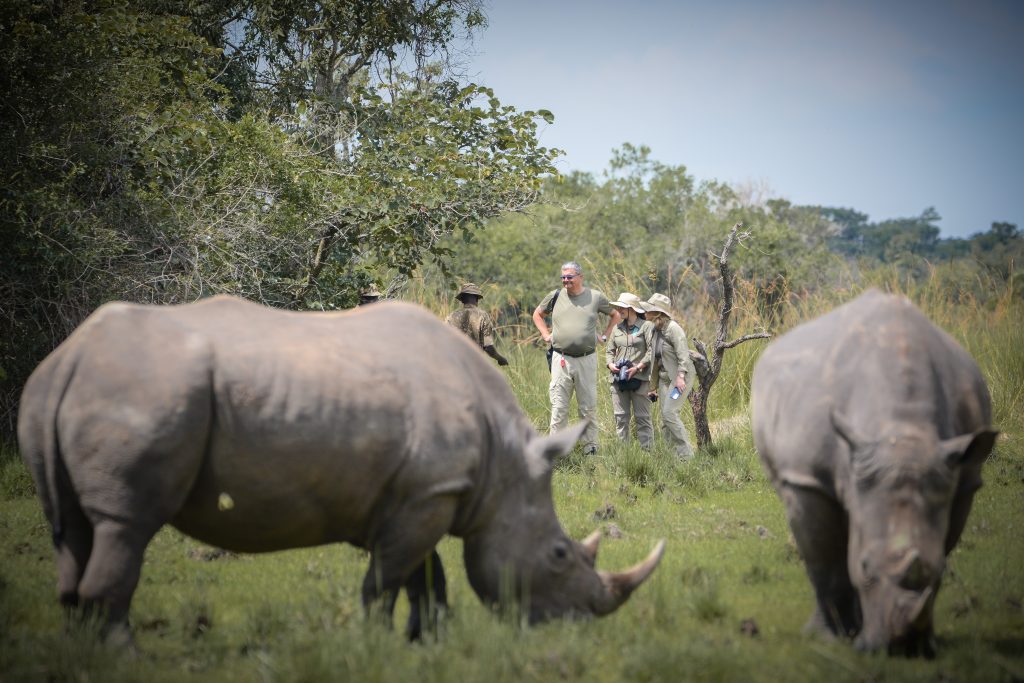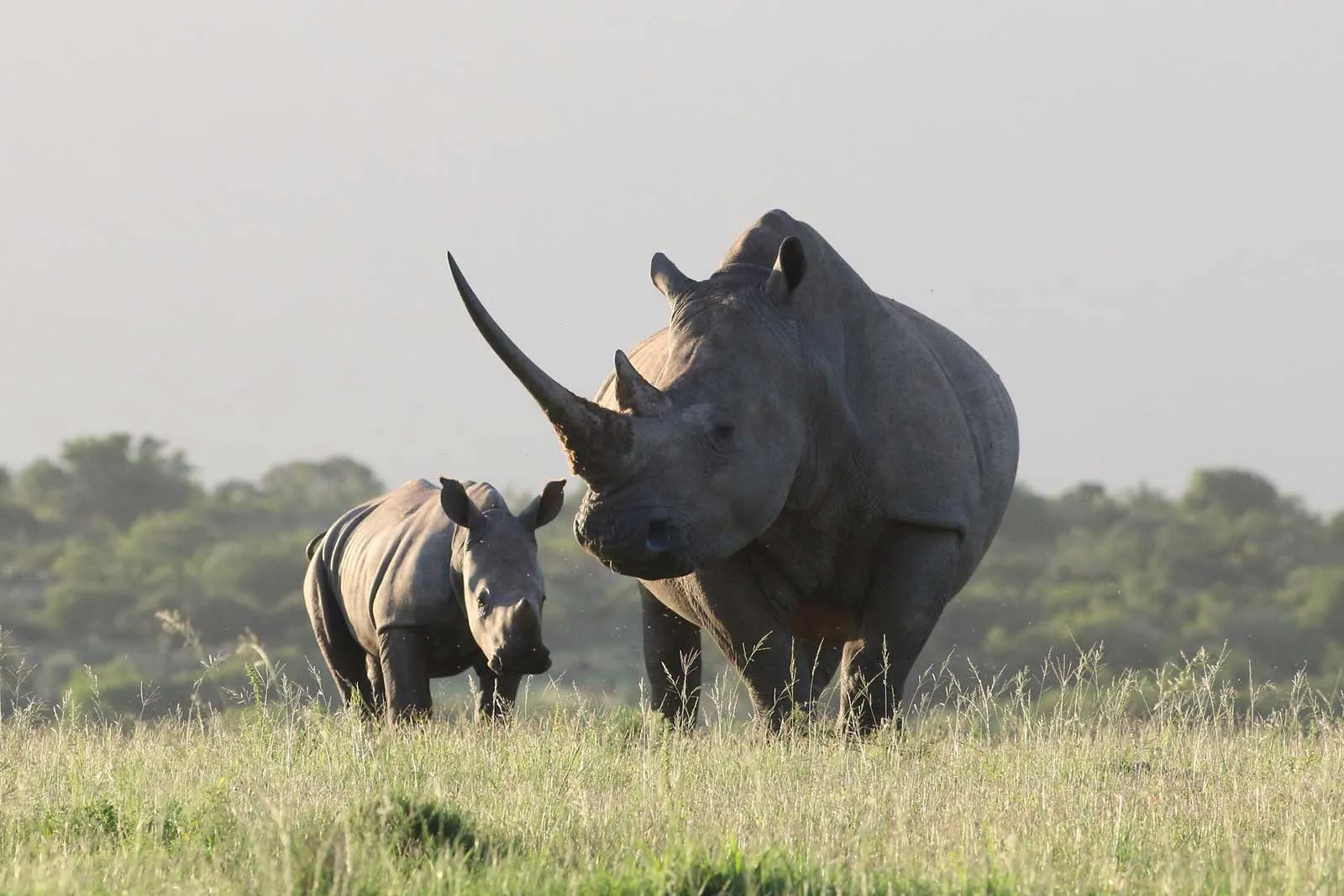12 Surprising Things You Never Knew About Rhinos
Facts About Rhinos; These are truly are incredible creatures-recognized for their brute strength, peculiar appearance, and instantly recognizable horned faces. Often depicted in popular culture as a symbol of might and stamina, these gentle giants still are in a highly vulnerable position due to ongoing poaching and habitat loss. Let’s go a little more in-depth into what makes rhinos so remarkable with these ten interesting facts!
1. Ancient Giants with a Rich History
Rhinos have been around on Earth for about 50 million years! Their ancestors looked very different, and some of them were as big as elephants. Over millions of years, rhinos evolved into five species we recognize today: the White, Black, Indian, Javan, and Sumatran rhinos.
2. There Are Five Species Today
There are five species of rhino: the Black Rhino and White Rhino in Africa, and the Indian, Javan, and Sumatran Rhinos in Asia. Each has its different physical traits and different habitats. For example, the Black Rhino has a hooked lip for browsing bushes, while the White Rhino has adapted with a broad mouth for grazing.
3. They’re Surprisingly Gentle Vegetarians
Despite their apparently threatening size and powerful build, rhinos are herbivores. They spend much of their time either grazing or browsing on grass, leaves, branches, and fruits. For instance, White rhinos have large, flat mouths just right for grazing on grass, and Black rhinos have prehensile lips to browse on shrubs and leaves.
4. The Horns are Made of Keratin – Just Like Human Hair and Nails
Rhino horns are made not from bone but of keratin-the same common protein found in human hair and nails. It’s this that gives the horn its fibrous structure, one that is constantly growing. In nature, rhinos accidentally wear off or even knock part of their horns off, which will grow back in over time.

5. Rhinos Have Poor Eyesight but Keen Senses of Smell and Hearing
Rhinos have relatively poor eyesight; they can only see up to about 30 meters in front of them, which isn’t that great when considering many other animals. But they make up for it with a great sense of smell and acute hearing. The size and orientation of the ears are such that independently of each other, they are able to swivel them in order to pick up sounds coming from various directions so as to detect a threat or find their companions.
6. Some Species Have a “Guide” Companion – the Oxpecker Bird
The oxpecker, otherwise known as the “tick bird,” is often seen hitching a ride on rhinos, particularly in Africa. Such small birds render very useful service: they feed on ticks and parasites that cling to the thick skin of the rhino and even help alert rhinos to approaching threats by making warning sounds when it senses danger.
7. Rhinos Are Surprisingly Agile and Fast
Though appearing big and unwieldy, rhinos are pretty fast; they can run up to 50 kilometers an hour for limited distances. Black Rhino employs celebrated agility in making sharp turns in charging, a feature used in repelling threat.
8. They Play an Important Role in Their Ecosystem
Rhinos are considered keystone species, meaning they perform a vital role in maintaining a balance within the habitat. White rhinos, for instance, graze in grasslands, so growth is short to minimize the risk of wildfires. That space is used by other animals for grazing.

9. Black and White Rhinos Aren’t Named for Their Color
The names “Black” and “White” rhinos actually have nothing to do with their color; both are gray. This is because the White rhino gets its name from the Afrikaans word “weit,” meaning “wide.” It describes its broad mouth. As time went on, the word was mistranslated as “white,” thus the name “White rhino.” The other species received the name “Black rhino” simply to distinguish them.
10. Rhinos Communicate in Surprising Ways
Although they are actually alone animals, rhinos do communicate with each other through various sounds: grunts, growls, snorts, and even sneezes. They also use chemical signals through territory marking with urine and dung. One rhino may have a “latrine” location where it habitually defecates, thereby leaving behind signals that other rhinos can detect and interpret. Facts About Rhinos
11. Their Thick Skin is Surprisingly Sensitive
Rhinos may look fitted with armor, but their tough skin-layer can be as thick as 5 centimeters and is very sensitive to sunburn, bug bites, and scratches. This is why they love to wallow in mud-it cools them down and the layer forms protection on their skin, acting like natural sunscreen and insect repellent.
12. Rhinos are Critically Endangered
All species of rhinos are listed either as endangered or critically endangered due to habitat loss, poaching, and human conflict. The greatest threat to their survival continues to be poaching, rooted in the belief of a market for rhino horns. Despite these challenges, there’s hope: due to conservation efforts, certain populations, such as those of the White rhino, have stabilized or even grown.
How You Can Help Protect Rhinos
Consider the support of conservation organizations and responsible safari operators as ways you can make a difference in their survival. Indeed, many areas of reserves, like Uganda’s Zziwa Rhino Sanctuary, serve as homes for rhinos where one can get to see them closely and contribute toward at least some useful conservation. These rhinos are actually one of a kind, resilient animals that make the ecosystems they live in even more valuable. Appreciation and protection of these magnificent beasts will ensure they continue to inspire and provide balance to nature for years to come.

Our Best Safaris to See Rhinos in Africa.
22 Days Best of Uganda Wilderness Adventure
18 Day Exploring Uganda Safari
15 Day Gorillas-Chimps and Big Five Safari
14 Days Uganda and Kenya Wildlife Safari
14 Day Uganda-Rwanda Wildlife and Primates Safari
10 Day Highlights of Uganda Safari
9 Day Kenya Wild Safari Adventure
8 Day Gorillas-Chimps and Big Five Experience
8 Day Best of Tanzania Wildlife Safari
7 Day Kenya Wildlife Safari Tour
3 Day Best of Akagera National Park
3 Day Ngorongoro Magical Adventure
Conclusion on 12 Facts About Rhinos.
They are so much more than just their horns and the vast frames that define them, complex, social, and essential creatures whose presence has an impact upon whole ecosystems. By protecting rhinos, we’re also safeguarding the biodiversity of our planet, a contribution to maintaining the balance in some of Earth’s most vibrant landscapes.











